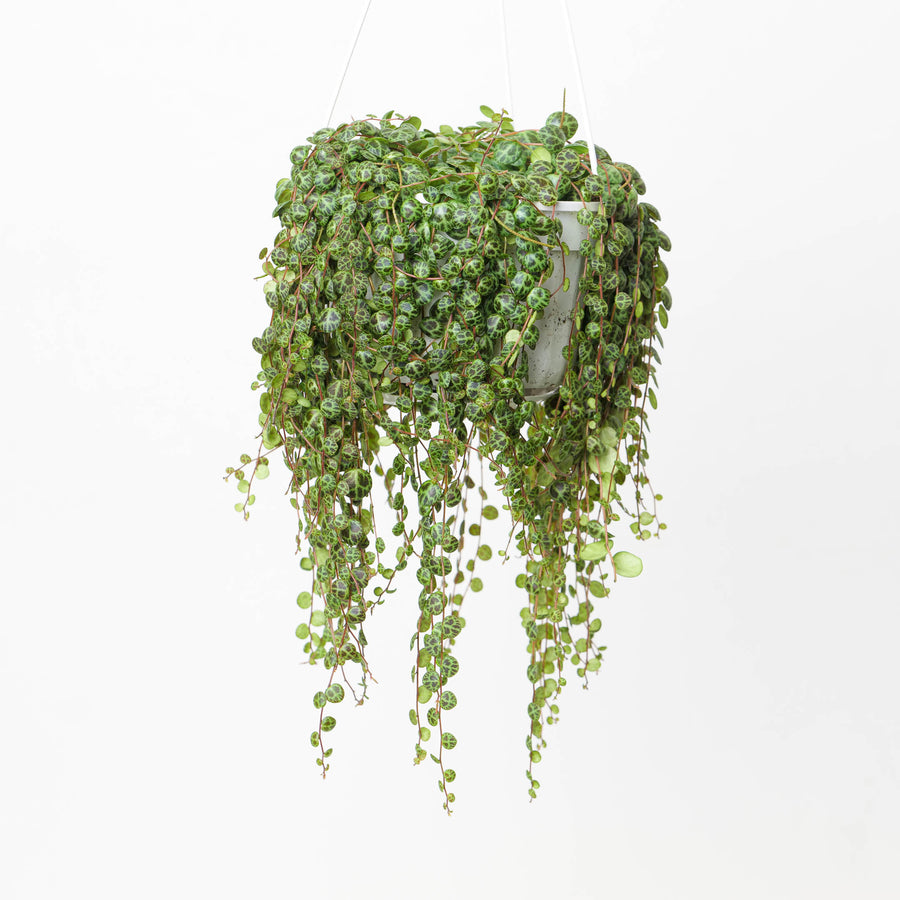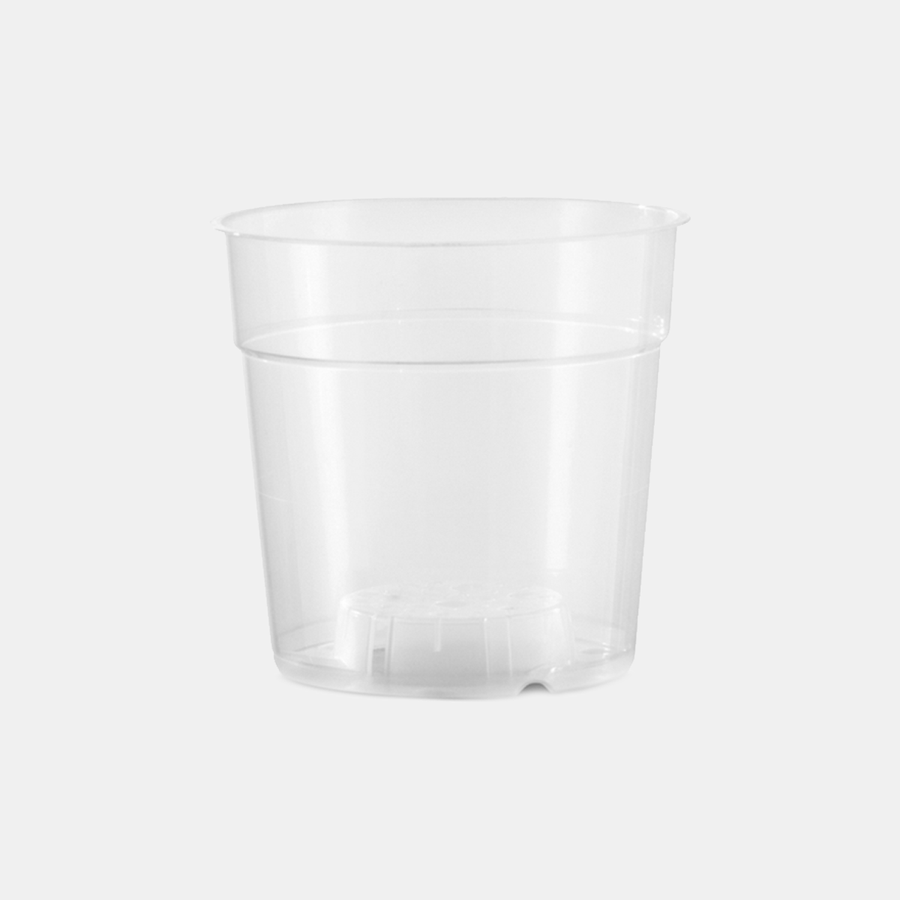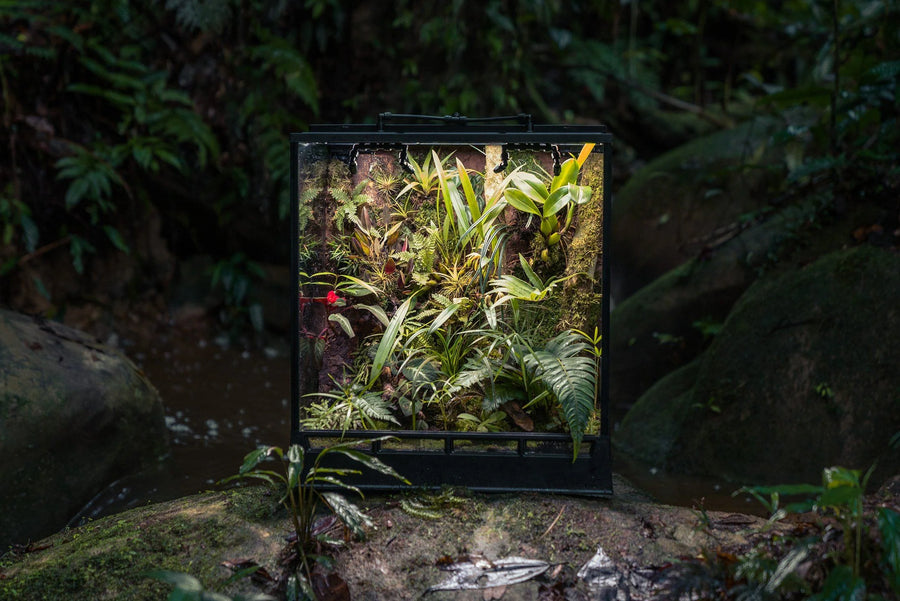GrowTropical's Botany Dictionary: Essential Houseplant Terms You Need to Know in 2025
If you're just starting out with rare and unusual houseplants, you may come across botanical terms that feel a bit unfamiliar or perplexing at first.
With a little guidance, these concepts will soon make perfect sense. Our detailed botany glossary will help you easily grasp key practices such as pruning and propagation, equipping you with the knowledge to nurture your plants with confidence.
A
- Acuminate: Long tapering leaf. The leaf typically narrows progressively from the widest part to the apex, giving it a distinctive, pointed form. This feature is common in certain plant species where the leaf tip extends in a smooth, extended point rather than abruptly ending.
- Aerial Roots: Roots that grow above the soil, often seen in Monstera and orchids.
- Agglutination: The clumping of particles, sometimes seen in plant sap during healing.
- Aphids: Tiny, sap-sucking insects that can infest houseplants.
- Air Plant: A type of epiphytic plant from the Tillandsia genus that grows without soil, absorbing moisture and nutrients from the air. They require regular misting or soaking and thrive in bright, indirect light.
- Aroid: Plants from the Araceae family, including Monstera, Philodendron, and Anthurium.
- Artificial Grow Light: A lighting source used to mimic natural sunlight for indoor plants.
- Anthurium: A popular aroid plant with heart-shaped leaves and bright spadix flowers.
B
- Bonsai: The art of growing miniature trees in containers, pruning to maintain their shape.
- Bromeliad: A family of epiphytic plants that includes the pineapple plant and Tillandsia.
- Bloom: The flowering part of a plant; blooms often occur seasonally or based on care conditions.
- Bud: A developing shoot or flower that can grow into a new leaf or bloom.
- Bullate: A puckered or blistered appearance.
- Beneficial Insects: Insects like ladybugs or predatory mites that help control pests in plants.
C
- Calathea: A genus of plants with beautifully patterned foliage, often used as houseplants.
- Caudate: A tail-like extension of the leaf apex.
- Chlorophyll: The green pigment in plants that allows them to absorb light for photosynthesis
- Coriaceous: Resembling the texture of leather.
- Cultivation: The process of growing, caring for, and maintaining plants.
- Climbing Plant: A plant that uses tendrils or aerial roots to climb, like a Philodendron or Pothos.
- Cutting: A piece of a plant used for propagation, typically a stem or leaf.
D
- Deciduous: Plants that lose their leaves in a particular season, such as winter.
- Dechlorinator: A chemical solution or filter used to remove chlorine and chloramine from tap water, making it safer for watering sensitive plants that can be damaged by these chemicals.
- Dormancy: A period in a plant’s life cycle when it temporarily stops growing, often in response to environmental stress like low light or temperature.
- Drainage: The ability of soil or a container to allow excess water to flow out, preventing root rot.
- Dieffenbachia: A tropical houseplant known for its large, variegated leaves.
- Dormancy: A period when a plant's growth slows or stops, typically in winter.
- Direct Sunlight: Full, unobstructed sunlight, often too harsh for many indoor plants.
E
- Environment: The surrounding conditions in which a plant lives, including light, temperature, humidity, and soil.
- Echeveria: A popular genus of rosette-forming succulents, often grown indoors.
- Elongation: Abnormally long growth in stems or leaves, usually caused by insufficient light.
- Epiphyte: A plant that grows on other plants or objects, deriving nutrients from the air and environment.
- Exotic Plants: Non-native plants grown indoors for ornamental value.
- Evergreen: A plant that retains its leaves throughout the year, even in winter.
F
- Fertiliser: A substance that adds essential nutrients to the soil to support plant growth.
- Ficus: A genus of plants that includes popular houseplants such as the Fiddle Leaf Fig and Weeping Fig.
- Foliage: The leaves of a plant, which are essential for photosynthesis and overall plant health.
- Frond: A large, divided leaf commonly found on ferns and palms.
- Fungus Gnat: Small flying insects that thrive in damp soil and can damage plant roots.
- Flowering Plant: A plant that produces flowers as part of its reproductive cycle.
G
- Genus: A taxonomic rank above species, grouping plants that share common characteristics.
-
Grafting: A horticultural technique used to join two plant parts together to grow as one.
- Grow Light: An artificial light source used to provide indoor plants with the necessary spectrum for growth.
- Greenhouse: A structure with transparent walls and roof, designed to create a controlled environment for plants.
- Glazed Pot: A plant container with a non-porous, shiny finish that helps retain moisture in the soil.
- Grafting: A horticultural technique where tissues from one plant are joined with another to grow together.
H
- Hybrid: A plant produced by crossbreeding two different species or varieties to create desirable traits.
- Hydroponics: A method of growing plants in a water-based, nutrient-rich solution, without soil.
- Humidity: The amount of moisture in the air, which is crucial for certain plants like tropical houseplants that thrive in higher humidity levels. Increasing humidity around plants can be achieved with misting, humidity trays, or humidifiers.
- Humidity Tray: A shallow tray filled with water to increase humidity levels around a plant.
- Hardy Plant: A plant that can tolerate harsh conditions, such as cold or drought.
- Horticulture: The science and art of growing plants, including cultivation and management.
- Houseplant: A plant that is grown indoors for decorative purposes or air purification.
I
- Indoor Plant: A plant that thrives in indoor environments, usually due to low light and temperature tolerance.
- Inflorescence: The complete flower structure of a plant, including stems, buds, and blooms arranged on a peduncle.
- Insecticidal Soap: A mild pesticide made from plant oils and soap to control pests like aphids and spider mites.
- Irrigation: The process of supplying water to plants, either manually or through a system.
- Iron Deficiency: A common nutrient deficiency in plants, leading to yellowing leaves (chlorosis).
- Ivy: A type of climbing or trailing plant, often used as a houseplant, such as English Ivy.
J
- Jade Plant: A succulent houseplant with thick, fleshy leaves, known for its resilience.
- Juvenile Leaves: The initial, smaller leaves produced by a young plant, which may look different from mature leaves.
K
- Keiki: A small baby plant that grows from the parent plant, often seen in orchids.
- Kokedama: A Japanese gardening technique where plants are grown in a ball of moss.
- Kentia Palm: A slow-growing indoor palm tree that tolerates low light and dry conditions.
- Kalanchoe: A genus of flowering succulents, often grown indoors for their colorful blooms.
L
- Lava Rock: A porous volcanic rock used in potting mixes and hydroponic systems for its ability to retain moisture and improve soil drainage, often used for succulents and other plants that require good aeratio
- Lanceolate: A leaf shaped like a lance head, tapering to a point.
- Lamina: A general anatomical term meaning plate or layer; in botany, the leaf blade.
- Leaf Node: A small growth point on a plant's stem where leaves, branches, or aerial roots emerge.
- Light Spectrum: The range of wavelengths of light, some of which are essential for photosynthesis in plants.
- Lithophyte: A plant that grows in or on bare rock.
- Leca: Lightweight expanded clay aggregate, often used as a soil substitute in hydroponics or semi-hydroponic growing.
- Lobe: A distinct protrusion from the leaf, either rounded or pointed.
- Low-Light Plant: A plant that can thrive in areas with minimal sunlight, such as ZZ Plant or Snake Plant.
- Lime Scale: A build-up of calcium deposits, often seen on pots or leaves, due to hard water.
M
- Mealybugs: Small, soft-bodied insects that infest plants, appearing as cotton-like masses.
- Monstera: A popular aroid houseplant with large, split leaves (e.g., Monstera deliciosa).
- Moss Pole: A support structure covered in moss (often sphagnum) that helps climbing plants like Monstera or Philodendron grow vertically. The moss retains moisture, encouraging the plant’s aerial roots to attach and climb.
- Mulching: The practice of covering the soil with organic or inorganic materials to retain moisture and suppress weeds.
- Midrib: A strengthened vein running along the centre of a leaf.
- Misting: Spraying plants with water to increase humidity, particularly for tropical plants.
- Microgreens: Young, edible plants grown from seeds, harvested at an early stage for culinary use.
- Mucro: A short, stiff spike on a leaf apex or lobe.
N
-
Nyctinasty: A type of movement in plants where leaves or flowers respond to changes in light levels, typically closing at night and reopening in the morning. This is controlled by changes in water pressure within the plant cells, often influenced by circadian rhythms.
- Node: A part of the stem from which leaves, roots, or branches grow.
- Nutrient Deficiency: A condition where a plant lacks essential nutrients, causing stunted growth or discolouration.
- Nepenthes: A genus of tropical pitcher plants, known for their insect-trapping pitchers.
- Neem Oil: A natural pesticide derived from the seeds of the neem tree, used to treat pests on plants.
- Non-Flowering Plant: A plant that does not produce flowers, such as ferns or mosses.
O
- Orchid: A diverse family of flowering plants, many of which are grown indoors for their beautiful blooms.
- Orchid Bark: A chunky, organic potting medium made from tree bark, commonly used for growing epiphytic plants like orchids. It provides good aeration to the roots while retaining moisture.
- Orchid Conservation: Efforts to preserve and protect orchid species from extinction, including habitat protection, propagation programs, and educating the public about sustainable orchid cultivation.
- Overwatering: Providing more water than a plant needs, often leading to root rot and other issues.
- Oxalis: A genus of flowering plants, some of which are grown as houseplants for their clover-like leaves.
- Oxygen: A by-product of photosynthesis, essential for both plants and humans to breathe.
- Organic Fertiliser: A fertiliser derived from natural sources, such as compost or manure.
- Offset: A small plantlet that forms at the base of a parent plant, often used for propagation.
P
- Papillose: Minute pimple like protuberances.
- Palmate: Denoting five or more lobes radiating from a central point on the rachis; hand-like.
- Peat Moss: A soil amendment used to retain moisture and improve soil aeration.
- Peduncle: The main stalk baring flowers, fruit or an inflorescence.
- Petiole: The stalk that connects a leaf blade to the stem of a plant.
- Perlite: A lightweight, volcanic glass material used in potting mixes to improve soil aeration and drainage. Its porous structure allows for better root oxygenation, making it ideal for plants that prefer well-draining soils.
- Photosynthesis: The process by which plants convert light into energy, using water and carbon dioxide.
- Pinnate: Referring to leaflets arranged in pairs along the stem, creating a feather-like appearance.
- Pluvial: defined by the abundant presence of rainfall.
- Propagation: The process of creating new plants from seeds, cuttings, or other plant parts. Common methods include water propagation, air layering, and division, allowing indoor plant collectors to reproduce plants from a parent specimen.
- Philodendron: A genus of tropical plants known for their large, heart-shaped leaves and ease of care.
- Pruning: The act of cutting back parts of a plant to encourage healthy growth and shape.
Q
- Quarantine: The practice of isolating new or infected plants to prevent the spread of pests or diseases.
- Queen of the Night: A cactus plant that produces fragrant, nocturnal flowers.
R
- Repotting: The process of moving a plant to a larger container to accommodate its growing roots.
- Rachis: The main stem of a plant or compound leaf. Or the flower-bearing portion of an inflorescence.
- Rheophyte: A plant found growing in fast flowing water or that is seasonally flooded.
- Rhizome: A type of underground stem that spreads horizontally and produces new shoots and roots.
- Root Bound: A condition where a plant’s roots have outgrown their container, often requiring repotting.
- Root Rot: A condition caused by overwatering, leading to the decay of plant roots and eventual plant death.
- Rooting Hormone: A substance used to encourage root development in plant cuttings during propagation.
S
- Semi-Hydro: A method of growing plants in an inert medium like LECA (Lightweight Expanded Clay Aggregate) instead of soil. This system allows better control over watering and nutrients while reducing the risk of root rot.
- Sinus: space or indentation between two lobes.
- Spadix: A fleshy spike that holds flowers, commonly found in plants like Anthurium and Peace Lilies.
- Spider Mites: Tiny pests that infest houseplants and feed on plant sap, causing damage to leaves.
- Succulent: A plant with thick, fleshy tissues adapted to store water, such as cacti and aloe.
- Sphagnum Moss: A type of moss used in potting mixes and for air layering or propagating plants.
-
Soil: The medium in which plants grow, providing nutrients, water, and support for root systems.
T
- Terrarium: A sealed or semi-sealed glass container used for growing small plants in a controlled, humid environment.
- Trailing Plants: Plants that grow in a hanging or cascading manner, like Pothos or String of Hearts.
- Transplant Shock: The stress a plant experiences after being moved to a new pot or location.
- Transpiration: The process by which water moves through the plant and evaporates from the leaves.
- Trellis: A framework of wood or metal that supports climbing plants.
- Trichomes: Trichomes serve multiple roles, including reducing water loss by limiting evaporation, protecting plants from herbivores by producing irritating or toxic compounds, and helping to regulate temperature by reflecting excess light.
- Top-Dressing: Adding a layer of compost or fertiliser to the surface of the soil without disturbing the plant roots.
- Tropical Plant: Plants native to tropical regions, often requiring high humidity and warm temperatures.
- Truncate: An abrupt base or end to the leaf, appearing to be squared or cut off
-
Terrestrial: Growing from the ground.
U
- Underwatering: Not providing enough water for a plant, causing wilting, leaf drop, or stunted growth.
- Urea: A nitrogen-rich compound used in fertilisers to promote plant growth.
- UV Light: Ultraviolet light, sometimes used to supplement grow lights to simulate the full sunlight spectrum.
- Umbel: A type of flower arrangement where individual flower stalks spread from a common point, often seen in plants like dill and carrots.
V
- Variegation: The appearance of different colors in a plant’s leaves, usually white, yellow, or light green patches.
- Vermiculite: A mineral used in soil mixes to retain moisture and improve aeration.
- Venation: The pattern of veins in a leaf, which can be pinnate, palmate, or parallel, among other types.
- Vining Plant: A plant that grows long, trailing stems, like Pothos or Philodendron.
- Vivarium: A glass enclosure used to cultivate and display plants, animals, or both in a controlled, self-sustaining environment. It is often used for tropical plants and reptiles, maintaining high humidity and stable conditions.
- Vegetative Growth: Growth that focuses on stems, leaves, and roots rather than flowers or fruit production.
W
- Watering Schedule: A regular plan for watering plants based on their individual needs, environmental conditions, and species.
- Worm Castings: The nutrient-rich excrement of earthworms, often used as an organic fertiliser to improve soil health. Worm castings contain beneficial microorganisms and essential nutrients for plant growth.
- Wilting: The loss of rigidity in a plant’s stems and leaves, often due to underwatering or overwatering.
- Water Propagation: A method of plant propagation where cuttings are placed in water until roots form.
- Winter Dormancy: A period in which some houseplants slow their growth during the winter months.
X
- Xerophyte: A plant adapted to survive in very dry environments, such as cacti and succulents.
- Xylem: The vascular tissue in plants that transports water and nutrients from the roots to the leaves.
- Xaxim: Also known as Tree Fern. A natural, fibrous material derived from the trunk of tree ferns, often used as a growing medium or support for epiphytic plants like orchids and ferns. It retains moisture well and provides a suitable environment for plant roots.
- Xeric Conditions: Environments with extremely low water availability, suitable for plants like succulents.
- Xanthophyll: A yellow pigment found in leaves, contributing to autumn colour changes as chlorophyll breaks down.
Y
- Yellowing Leaves: A sign of plant stress, often due to nutrient deficiency, overwatering, or pests.
- Yuccas: A genus of drought-tolerant, spiky-leaved plants that can be grown indoors or outdoors.
- Y-Plant: A nickname for Pachypodium, a plant with a thick, water-storing stem and small leaves.
Z
- Zamioculcas (ZZ Plant): A hardy, low-light indoor plant known for its shiny, waxy leaves and resilience.
- Zeolite: A naturally occurring mineral used in potting mixes to improve nutrient retention and soil aeration.
- Zingiberaceae: The ginger family, which includes plants like turmeric and cardamom, sometimes grown indoors for culinary use.
Got any suggestions to add to the list? Send us a message on Instagram, Threads or Facebook (@growtropicals) or email us at hello@growtropicals.com






